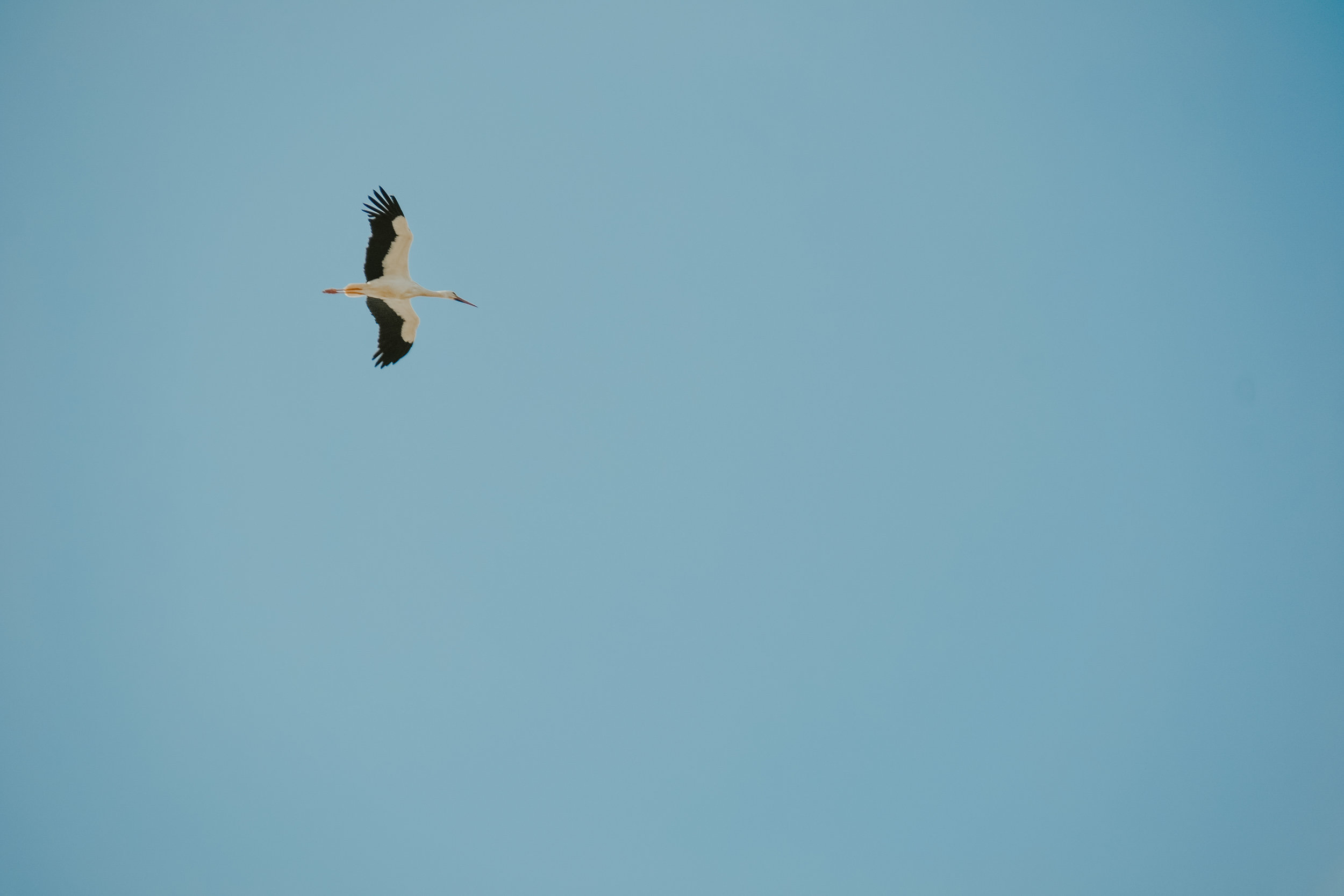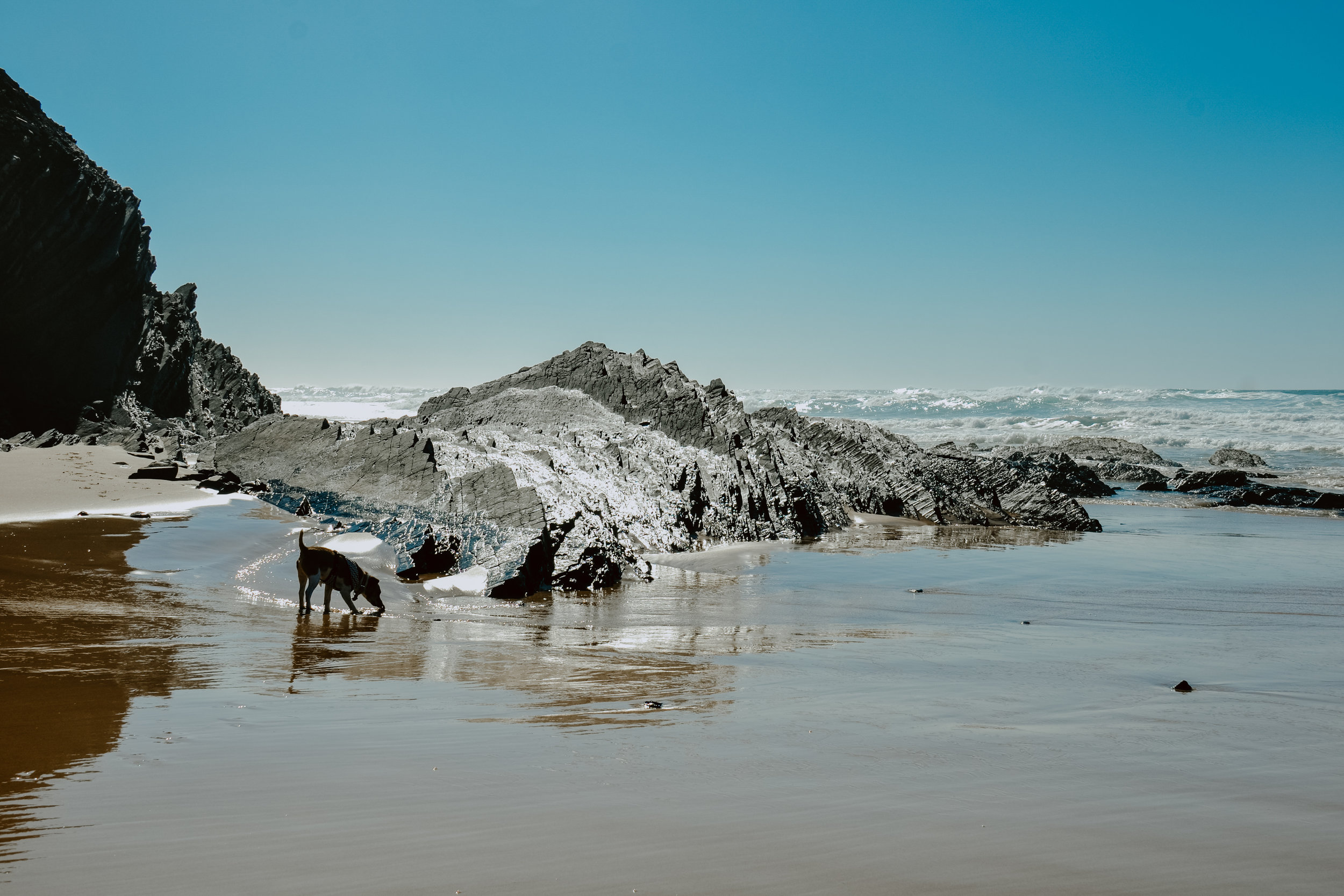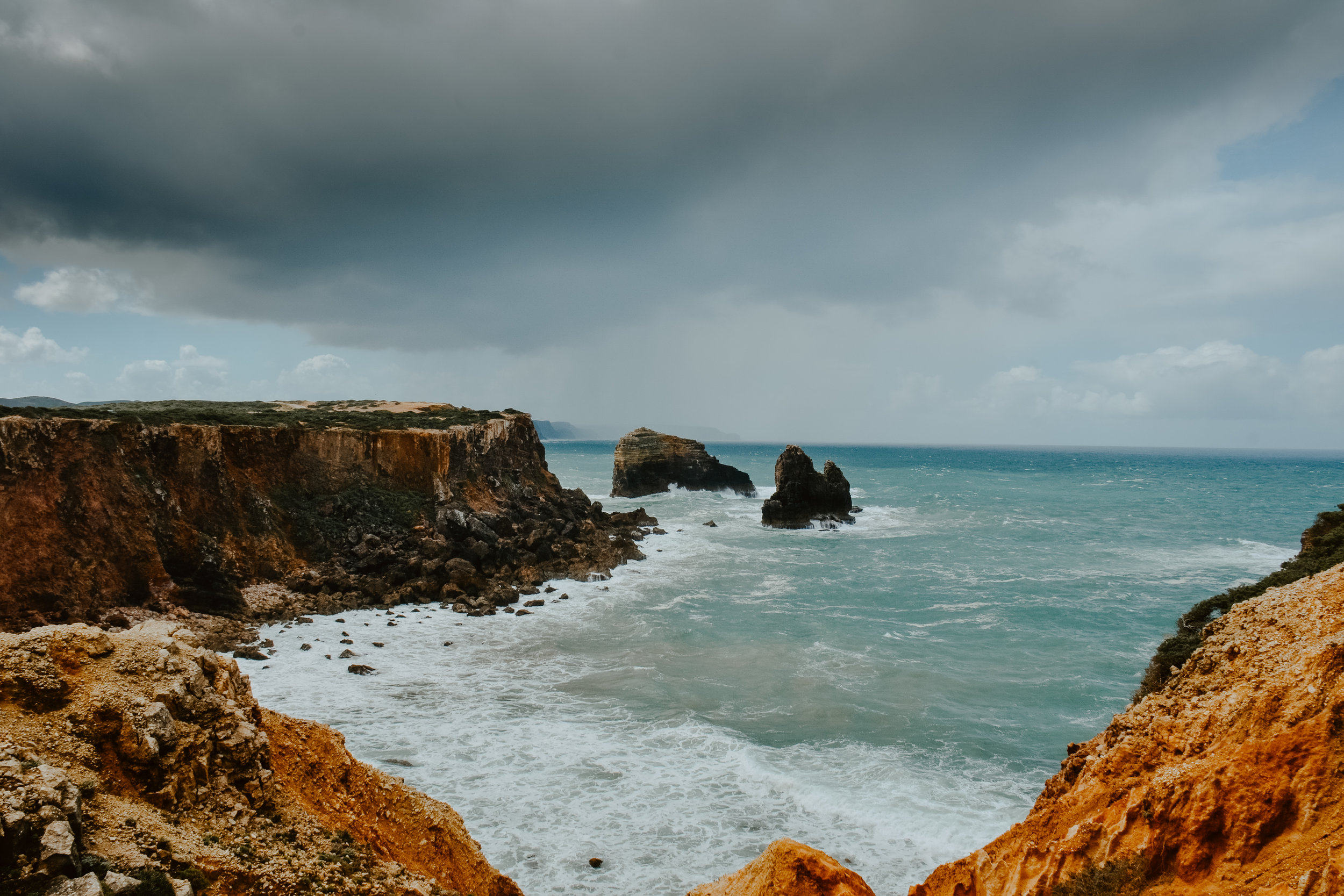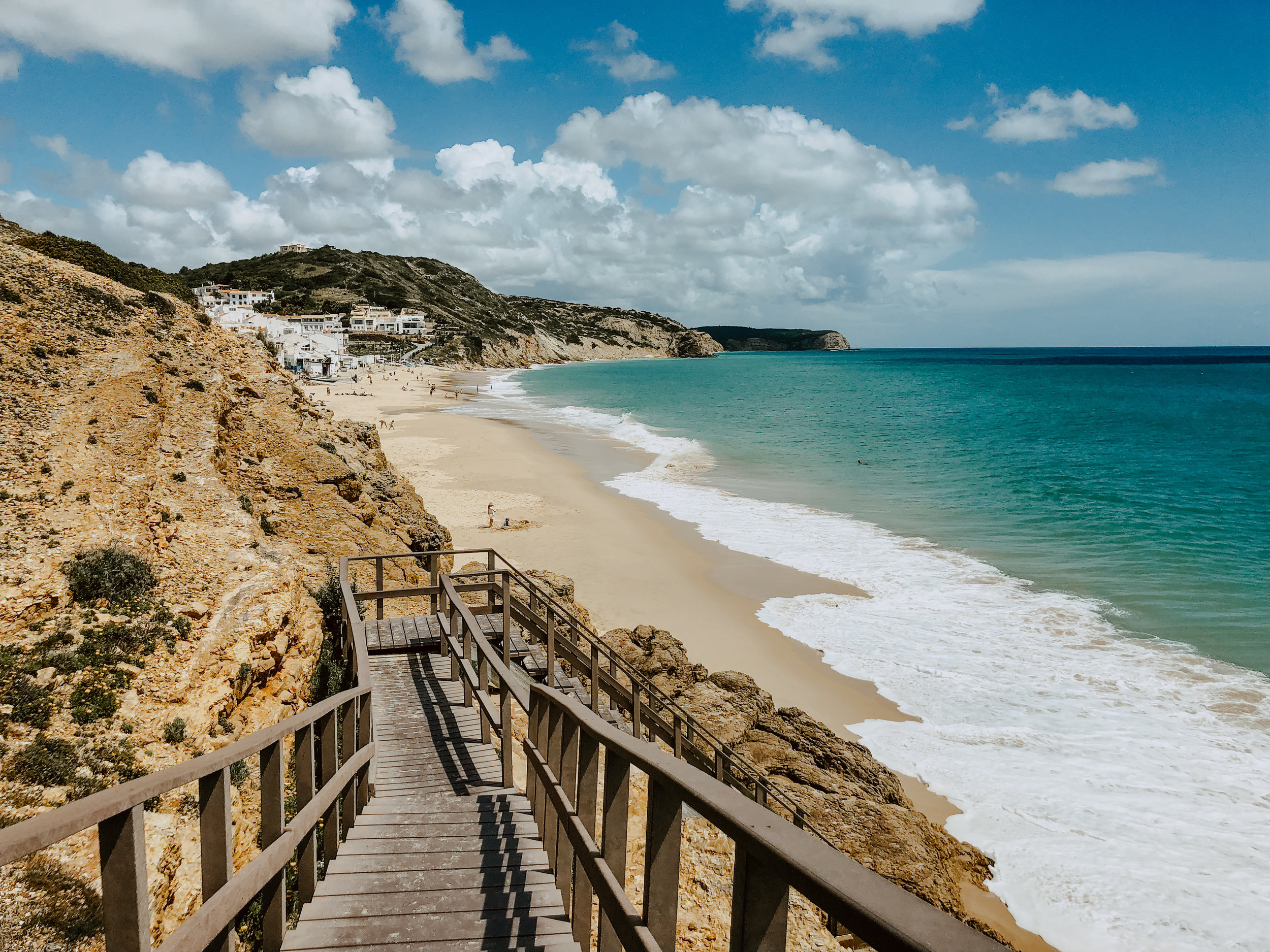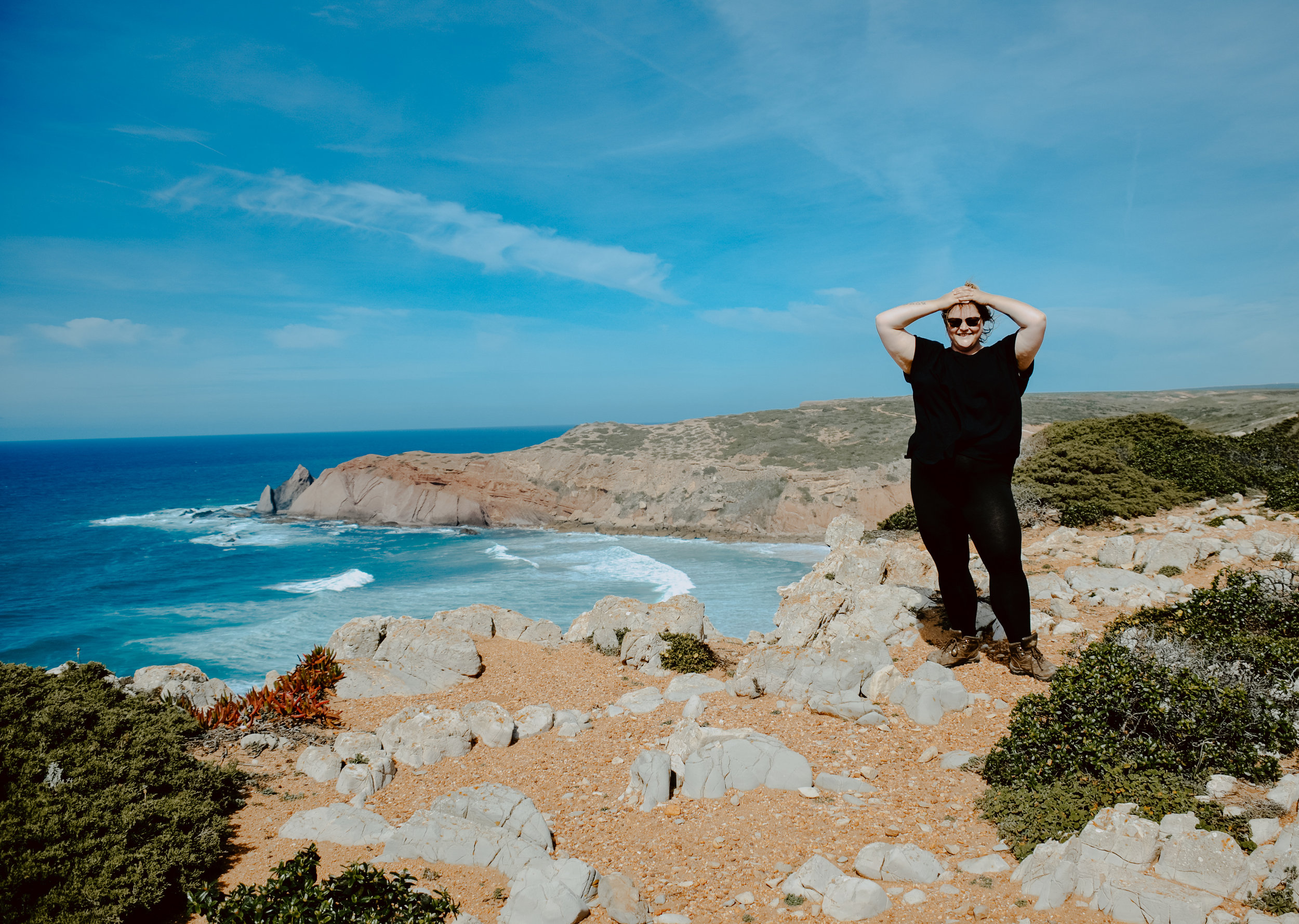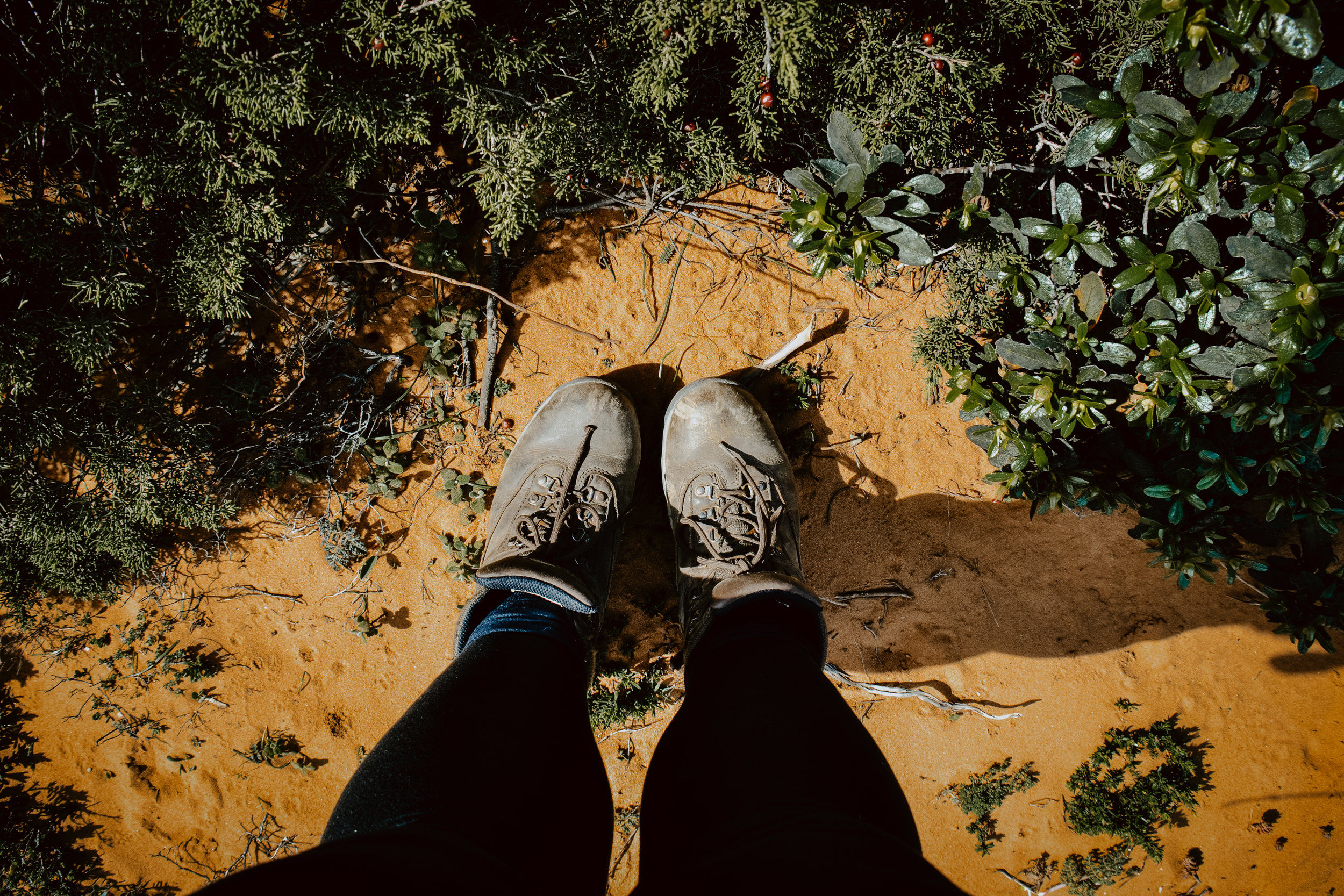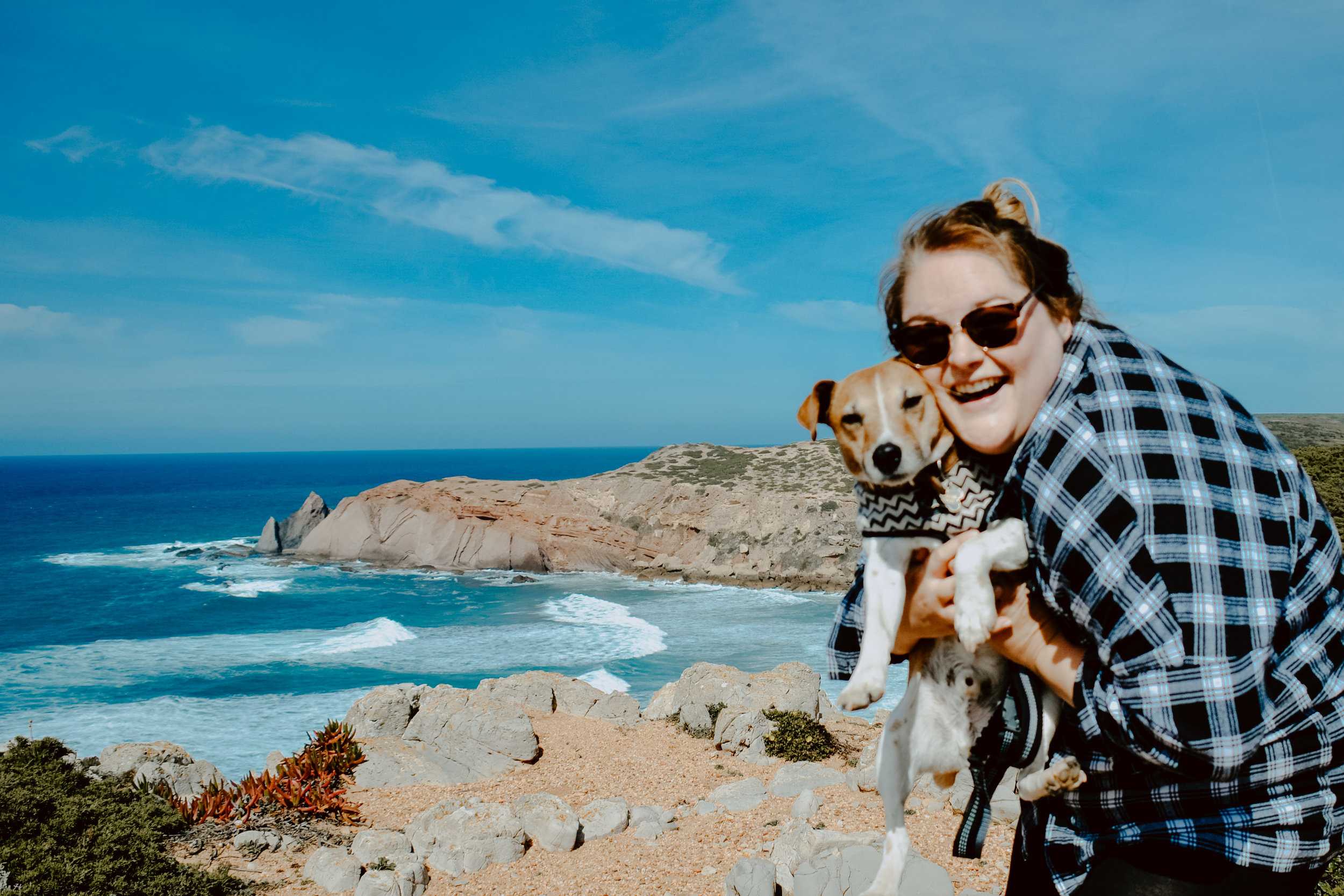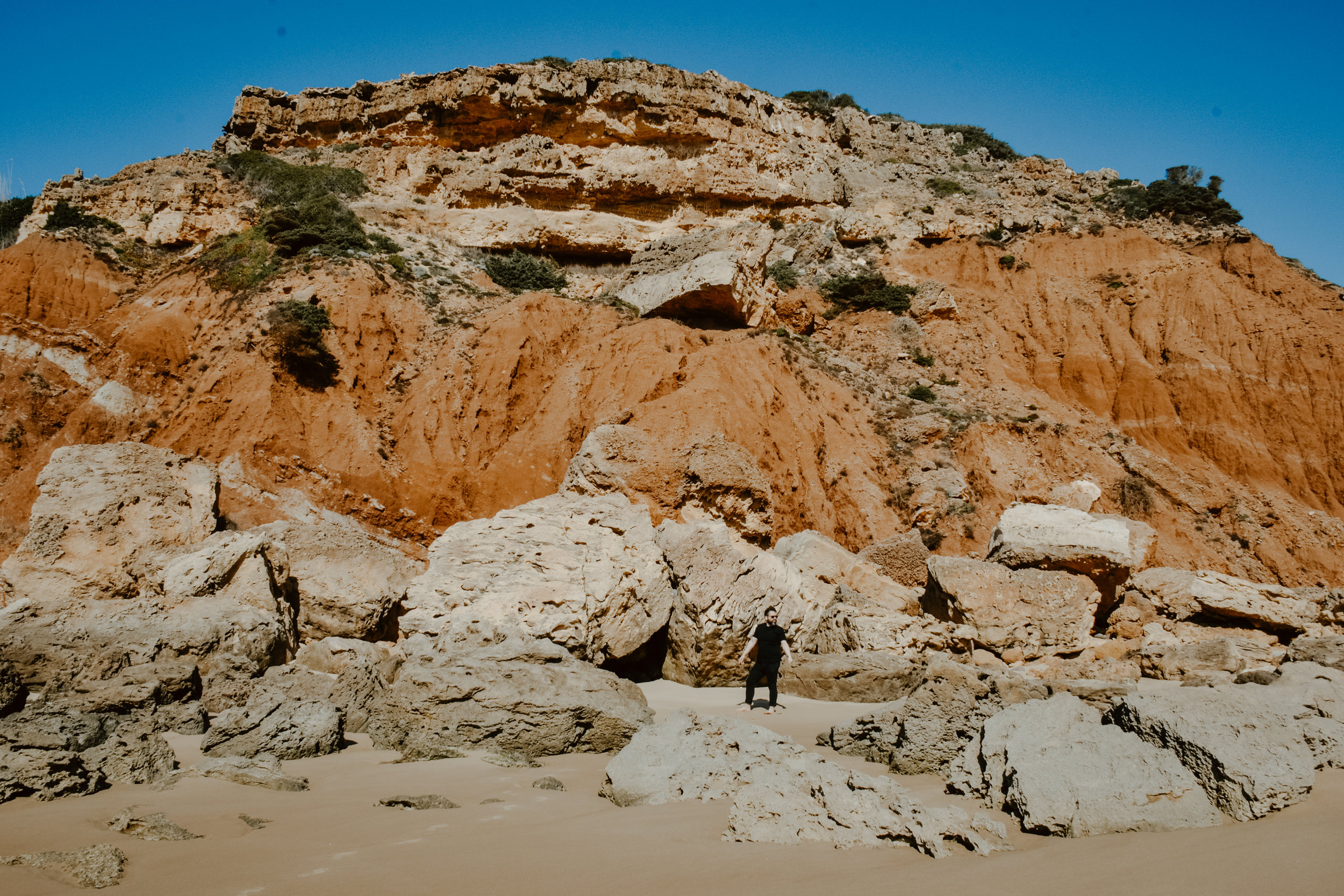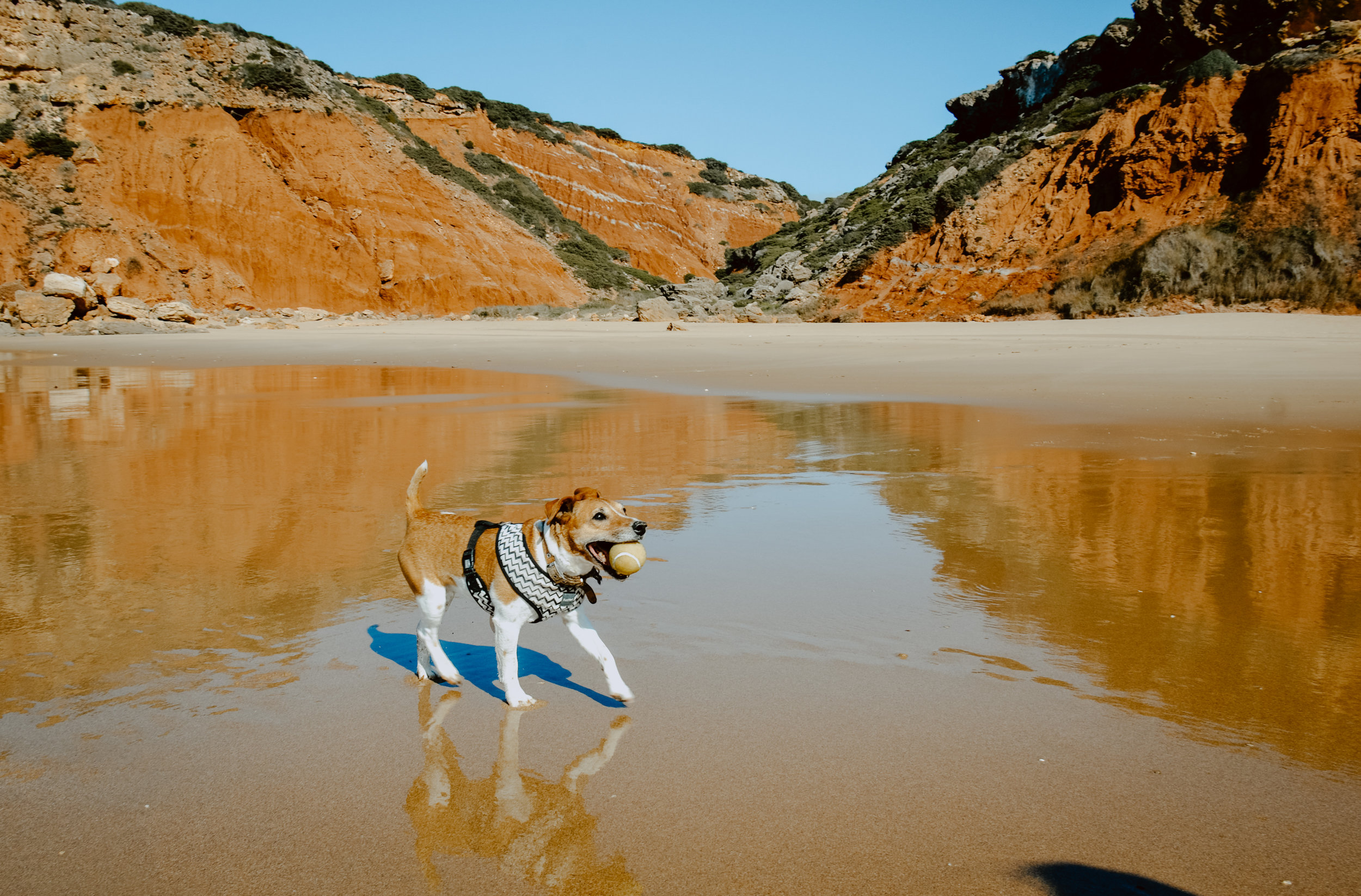A Complete Guide to the Not-So-Hidden-Gems of The Algarve
The bartender, Claudio joked as he handed me a beer, “Don’t worry, the Algarve is a British colony.” I gave him a wry smile. The joke was designed to cheer me up, but in reality it felt like barbed wire, because devastatingly, he was right. I was recovering from a doomed hike to the infamous Seven Valleys where ancient watercourses had carved magnificent rock formations and caves into the coastal cliffs just north of Portimao.
The Seven Valleys Trail; beautiful but spectacularly busy.
Like any natural wonder discovered by humans we do what we do best; invade it. The tourist tack being sold in the car park should have been warning enough, but the throng of holiday makers perilously close to the cliff’s edges taking photos was still a shock to the system. After driving over an hour to hike the Seven Valley trail I was bitterly disappointed not to have my rejuvenating coastal walk I had envisioned so I sought refuge in one of the surfer bars in the Western Algarve which I had called home for the past 2 months, when Claudio noticed my mood and asked me what was wrong. I bet he wish he hadn’t.
It was him, after all, that told me how difficult life was in the Algarve. Low paid, seasonal work dependent on the whim of tourists meant many like him were trapped in a cycle of unstable zero hour contracts and high cost living. At the same time, tourism has bought more wealth to the area, better infrastructure, services and women, Claudio really liked the women.
The Algarve with its warm climate, sweeping beaches, and dramatic coastline is naturally one of the most popular holiday spots. In 2017 the Algarve welcomed 4.2 million guests, generating €1.08 billion in income which is 30% of the national total of tourism revenue.
This means there are very few spots left in the Algarve that remain untouched from the demands of tourism. Yet there are a few coastal villages who determinedly hang onto their traditions and retain their old charm.
This blog will take you to some of these beautiful hidden gems in the Algarve and Vicentine Coast, but even these spots will be busy during the school holidays. I can’t recommend exploring Portugal out of season highly enough, because you will see all experience all of its splendour without the crowds and it really is magical.
Salema
Once you are past Lagos the far western end of the Algarve forms the Costa Vicentina Natural Park, which remains unspoilt and is a protected area of natural beauty. Along this stretch of coastline are mostly small fishing villages. Salema with its singular cobble street and old fishermen with weathered faces casting out fishing nets from their small fishing boats each morning is a tribute to the past.
The thing is back in 2015 the Telegraph featured the tiny village of Salema, so the now not-so-secret seaside village has grown rapidly with luxury cliff top villas and fancy restaurants. However, during the winter months the village returns to its sleepy pace that I feel in love with some 10 years ago.
Salema Beach
2. Ingrina
The road to Ingrina is small and narrow, winding through fields of undulating cereal crops and passing a number of megalithic monuments, reminding you that many nomads wandered this land long before you.
As you reach the petite shell-shaped cove you will see it is surrounded by craggy cliffs that give you magnificent views over the Portuguese coastline. The water tends to be calmer here as the cove is largely protected from the often fierce Algarve winds that makes this area so popular with surfers. It is apparently great for snorkelling and diving as the underwater rock formations are rather special. In the coolness of the January sun I wasn’t brave enough to do either.
Ingrina Beach at sunset
This spot is popular with vans even during the winter months, but there are usually quieter park ups to the along the cove up the hill.
3. Sagres
Sagres is at the extreme western tip of the Algarve so it has little shelter from the westerly wind making it the ultimate Mecca for surfers. The town has a laid-back vibe because of it, but the town inevitably caters for the multicultural surfers and travellers that descends on its’ shores. It is here you will find Italian restaurants, vegan cafes, and bars.
I skipped most of that because I have learnt I am an utter granny on the road and prefer being surrounded by nature rather than surf hunks. No wonder I’m single.
Instead I went to the tourist information situated on the beach and bought myself a book, “A Guide to Walking Trails in the Algarve.” The guide has around 35 trails of varying length and difficulty across all of the Algarve, complete with descriptions and maps.
The Fortaleza de Sagres, where Henry the Navigator devised his 15th century expeditions to the uncharted seas around the western side of Africa, is well worth a visit. For €3 you will be treated by great panoramic views over the ocean and towards Cabo de Vincent, but otherwise there is little to see of the fort itself because most was destroyed during the 1755 earthquake and tsunami.
Fortaleza de Sagres
Cabo de Vincent, up until the 14th century, was known as the end of the world. A lighthouse was built 1846 on the old ruins of a Franciscan monastery. Now it guards the busy shipping lines and is one of Europe’s brightest lighthouses that can be seen 60 miles away. You can drive straight to the lighthouse to admire its architecture, views and enjoy the cafe, but to make your visit extra special I would recommend hiking to the lighthouse from Praia do Telheiro.
4. Praia do Telheiro
While hiking along the Sagres coastline I spotted this deserted beach in the distance. Nestled amongst the wind-swept wilderness of the national park it looked next to impossible to reach. After some investigative work on Google Maps I found it. Praia do Telheiro is reached by bone-rattling unmade roads which only adds to its allure.
Getting to the beach requires a mad scrabble down the cliffs rocks but once there you, and if you’re unlucky, perhaps a handful of other visitors will be the only ones enjoying the white sands, crystal clear water, and historic rock formations.
Apparently, Telheiro’s rocks and surrounding cliffs are particularly special in the geology world because they show two distinct sedimentation periods the Triassic Red Sandstone and the Carboniferous shales and greywackes. These two distinct layers have undergone various lithospheric movements to form unique patterns that continue through the steep and high cliffs. I don’t know much, but I do know they add to the atmospheric solitude of this beach.
The car park sitting high up in the cliffs is on Park4Night so leave your van there and hike to Cabo de Vincent which you will see in the distance, enjoy a cup of coffee in the lighthouse, before walking back for a peaceful night sleep in Telheiro.
NB: Don’t drive here if it has been raining - you will get stuck!
5. Praia do Castelejo
In contrast to Telheiro’s bright orange and red rocks, Castelejo has jet black schist cliffs rising out from its perfect yellow sands. The beach is large enough for you to carve out a private patch and has everything you would expect from a Blue Flag beach; ample car parking, cafe, toilets and a lifeguard during summer.
Many campers were there during the winter, but my top tip would be to head back a little further inland to do the Castelejo Environment Trail through the valley.
6. Carrapateira and Praia Da Bordiera
Carrapateira is a tranquil, pretty, spread-out village, with two nearby beaches whose lack of development and strong swells attract a hippy, surf-dude crowd. My favourite was Praia Da Bordiera, which is also the starting point for the magnificent Trail of Tides hike. I spent a few nights there hiking, paddling in the lagoon and sitting round camp fires with fellow VW campers.
7. Barragem da Bravura
As the Easter holiday crowd descended on the coast, I sought refuge inland to the Algarve’s under-appreciated countryside. Built in the sixties, the Bravura dam has formed a beautiful lake with emerald waters, surrounded by rounded hills, narrow valleys and zigzagging trails.
A great hiking trail starts in ‘The Happy Cafe’ which takes you down to the impressive dam wall, before the trail that takes you around the lake.
The cafe’s car park is not camper friendly but as you drive towards the lake you will see a viewing point which is the perfect park up. Relax, as you watch the sunset over the hills, smugly knowing the crowds on the beaches are wrestling for the perfect sunset spot.
What the locals think…
The Portuguese are incredibly proud of their country and they want you to love it as much as they do. I’ve found local people helpful, kind and only too helpful to point out secret spots. But in an area that is dependent on tourism, their livelihoods literally depend on you supporting local businesses. ‘Vanlifers’ and in particular, surfers, aren’t well known for doing this and don’t have the best reputation for keeping natural areas clean. This gets worse over the summer when more holiday-makers descend on the area. I’ve heard a lot of locals complaining about the state of places where vans wild camp. I’ve spotted stickers on lamp posts say ‘Fuck off surfers’ and ‘No More Surf Biz,’ and the GNR are cracking down on wild camping within the natural park.
While this resentment remains small now, I can imagine in a few years, it will only grow. Part of sustainable travel is supporting the local economy. A healthy mix of wild camping, staying in campsites, and shopping locally is the best way to achieve this.
Needless to say, always follow the Leave No Trace Principles.
Places to Stay
I mostly wild camped during my time in the Algarve but there was one campsite I kept coming back to time and time again.
Figueira Caravan Park
Small, but perfectly formed, this campsite has everything you need - free wifi, solar powered showers, large pitches, washing machines and dryers with full cycles (90 minutes guys, 90 minutes). It is perhaps not the prettiest campsite but the 5 minute walk through the farmland and lush valley to Figueira beach makes up for it. Plus at only €7-8 per night, can you really complain?!
Top Tip: You can use Figueria’s services - water point, toilet waste, showers, and washing machines - even if you’re not staying here.
Salema Eco Camp
This site was closed while I was there due to improvement works but I have only ever heard good things about this eco campsite. I always look enviously at it when I drive by!
Places to Eat
Pizza Mobile Salema
Ordering a takeaway pizza to take back to the van while staying in Salema is my happy place. They make a mean Mojito too.
Atlantico Salema
You are not going to have a mind-blowing meal here, but they do serve good coffee, the views across Salema’s beach are lush and their Wifi is good.
Hello Goodbye Cafe at Barragem da Bravura
The trail around the dam starts from the cafe, but it is worth stopping here for lunch. They are also dog friendly giving Dougie a fresh water bowl and biscuit.
O Sitio Do Rio near Barragem da Bravura
After the 20km Trail of Tides hike you will want good food and you will find it here at O Sitio Do Rio. I can recommend the garlic prawns.
O Sabor da Alegria
This is a hidden gem in the small village of Figueira. It doesn’t look like much from the outside, but this small, friendly restaurant serves excellent wood fired pizza and ice-cold beer.
Do you have a favourite spot on the Algarve? I would love to hear them!

